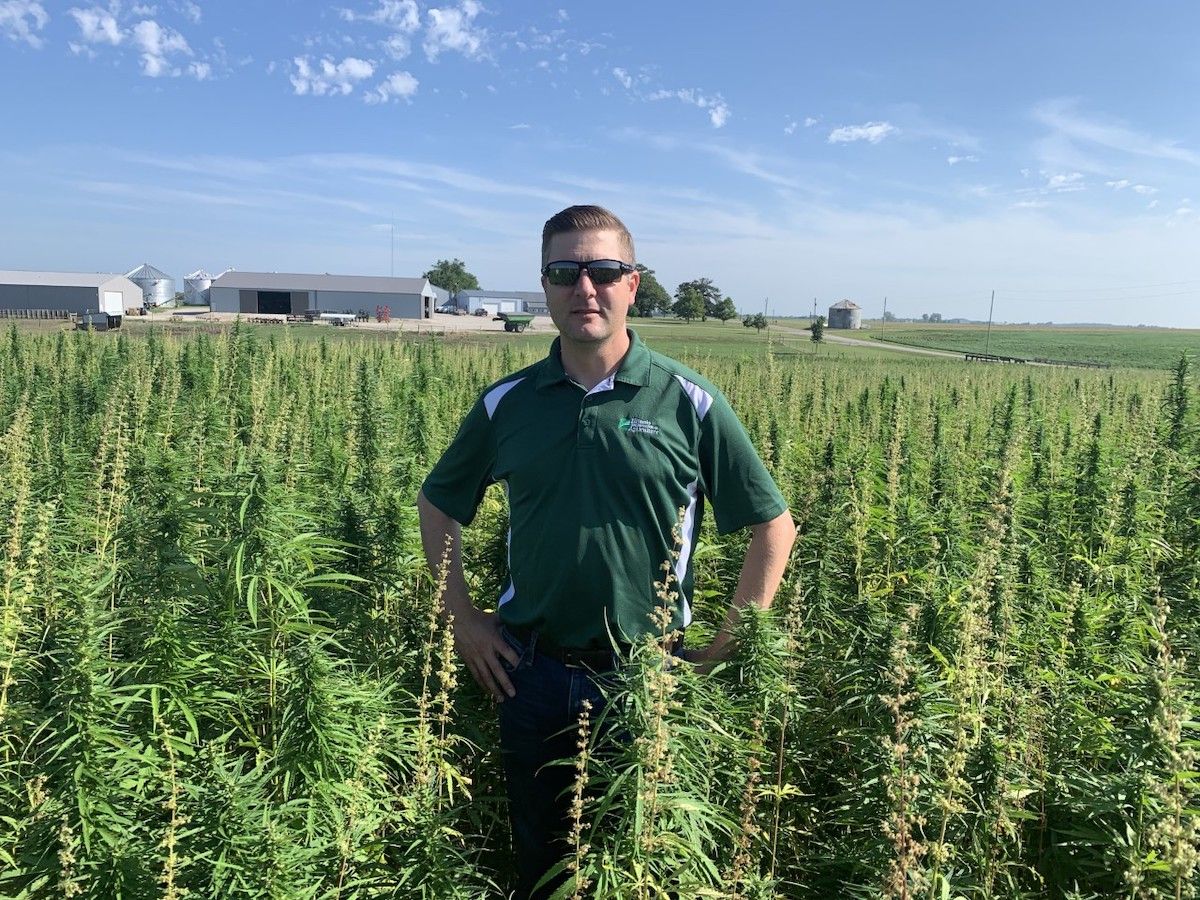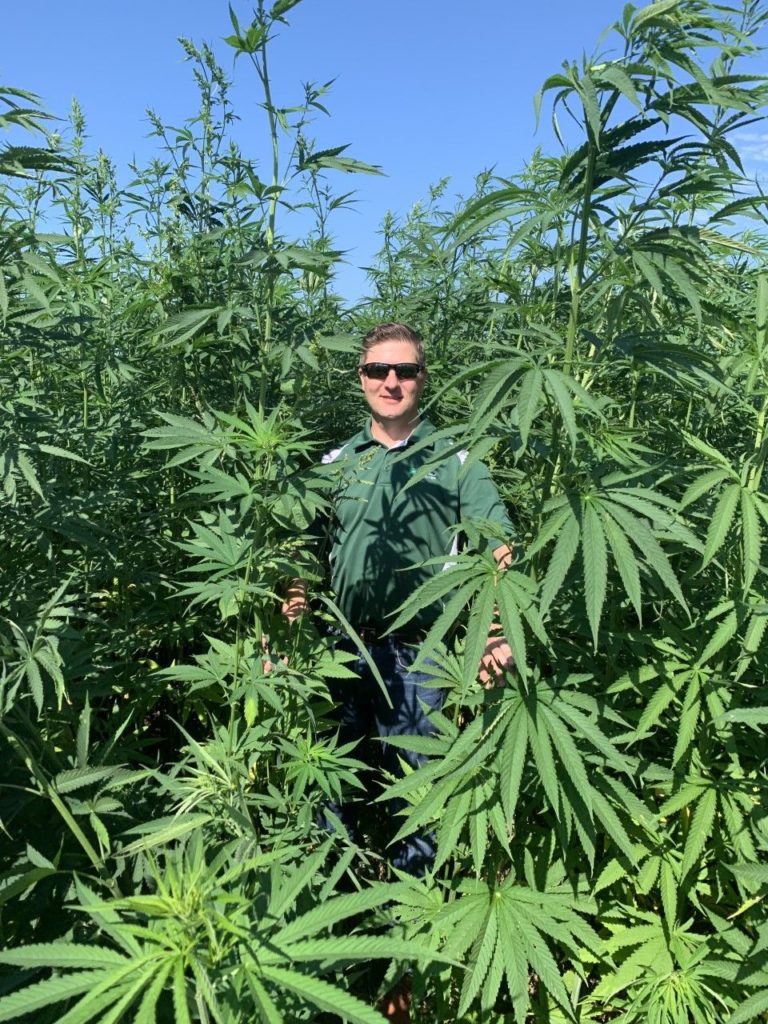
In early April, the Illinois Department of Agriculture (IDOA) released its final harvest numbers for the 2019 hemp season, its first year of legal cultivation in decades. And considering the weather challenges the state faced last year, the data is being interpreted as surprisingly positive.
According to IDOA, of the 651 hemp growers’ licenses issued for the 2019 season, all but 137 planted at least an acre of hemp. The final result for the season was 2.27 million pounds of total yield, with 73% of planted acres harvested, a very high ratio of planted to harvested acres compared to most other states where hemp was cultivated in 2019.
“We were really pleasantly surprised by the dedication of the farmers,” Jeff Cox, IDOA’s Bureau Chief of Medicinal Plants, told Hemp Benchmarks. “Across the country and especially in Illinois, we were considered a disaster area in the spring because we had so much rain, and then we had a drought in the summer. Those farmers were faced with a ton of challenges early in the spring and into the summer. But they continued to push through, get something in the ground, and then 73% of those folks were able to harvest their crops, which is pretty great.”
A State “Made” for Hemp Cultivation
Cox, who oversees the Illinois hemp program, also believes that the 2019 harvest numbers are a sign that the state’s interest in hemp is real. “Illinois, geographically we’re made for fiber hemp,” he said. “We have these vast, thousand-acre fields that are flat, that are easy to maneuver, with great soil, great sunlight, great amounts of rain. That’s why we’re one of the leaders in corn and soybeans. I think that’s one thing that’s very attractive to farmers that are used to taking a combine out and cutting down 100 acres at a time. Hemp [for fiber] isn’t going to be that much different from corn and soybeans.”
While hemp grown for fiber is developing a following with Illinois farmers, Cox noted that the hemp-derived cannabidiol (CBD) market is still dominant. “I think we’re going to see an increase in the amount of fiber,” he predicted, “but that doesn’t mean we’re going to see a decrease in the amount of CBD. We just don’t know yet. But I think that CBD will be the major hemp crop and that’s probably a nationwide thing.” In regard to processing the state’s crops, Cox added, “We have some companies that are hoping to be building some fiber processing facilities or at least industrial-use facilities, rather than just CBD oil.”
Illinois farmers reportedly harvested 1.4 million pounds of hemp biomass in 2019, along with nearly 596,000 pounds of hemp flower for CBD. But Cox said a lot of Illinois farmers have learned that high-CBD cultivars are a lot of work when compared to growing for fiber, due to the greater focus on cultivation, threats from insect infestation, the labor-intensive, post-harvest trimming, and the high risk of THC failure.

Prospects for the 2020 Season
That said – and despite the disruptions caused by the COVID-19, or novel coronavirus pandemic – Cox is optimistic about the 2020 hemp season. Cox noted that Illinois allows hemp farmers to apply for one, two, or three-year licenses. In 2019, most cultivators in the state applied for the three-year license, so the majority of hemp farmers do not have to renew their applications this year. So far for 2020, he said, a lot of the one-year hemp licenses are also being renewed.
The biggest challenge for Illinois hemp farmers, according to Cox, is finding somewhere to sell their products. “A lot of folks are sitting on hemp still,” he said. “I think that’s the biggest problem is that farmers grew the stuff and now they don’t have anywhere to sell it. So I think we’re going to see a lot more pre-plant contracts, I would bet, whether in-state or out-of-state for processors.” Illinois is still operating under its pilot hemp program, and Cox said the state will be filing its USDA plan sometime in the late spring or early summer. “We figure it’s only fair to allow our farmers to continue under the program they’re familiar with, through this year, especially since they’re buying clones and they’re buying seeds as we speak,” he said. “They’ll put them in the ground here within the next few weeks. So we want them to know what’s going to be compliant this year, versus what will be compliant in 2021.”



